
Deep Satisfaction of Making and Sharing
Familiarity, Memory, and the Emotional Architecture of Taste
Control, Ritual, and the Deep Satisfaction of Making and Sharing
The Psychology Behind Our Craving for Home-Cooked Food
In a world of instant gratification – where food arrives faster than thought and algorithms curate our cravings – the enduring magnetism of home-cooked meals defies logic. It’s not just about flavor – it’s about feeling. Despite the convenience of delivery apps and the ubiquity of processed options, people consistently report deeper satisfaction, emotional comfort, and even psychological healing from meals made at home.
This craving is rooted in a complex web of memory, identity, ritual, and neurobiology. Home-cooked food is a multisensory experience that activates the brain’s deepest emotional circuits, reinforces cultural and familial bonds, and satisfies primal psychological needs for control, connection, and care. What follows is a layered exploration of why we love home-cooked food – and why its impact goes far beyond the plate.
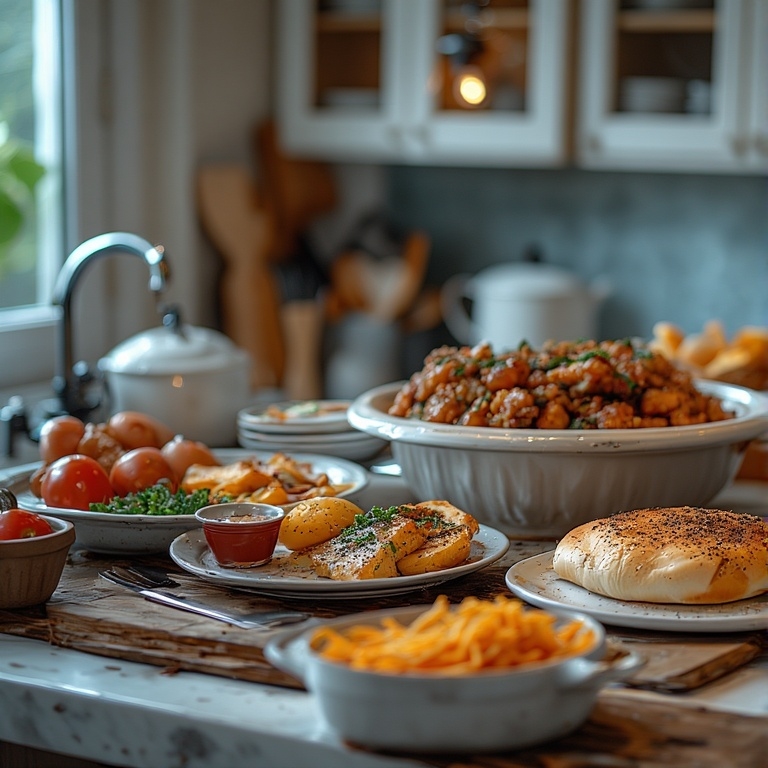
Familiarity, Memory, and the Emotional Architecture of Taste
The scent of onions caramelizing or the texture of a hand-rolled dumpling can instantly transport us to childhood kitchens, holiday tables, or quiet moments of care. This isn’t just nostalgia – it’s neurobiology. The olfactory bulb – which processes smell – is directly wired to the limbic system, the brain’s emotional core. This proximity explains why scent and taste are uniquely capable of triggering vivid emotional memories.
These associations form what psychologists call “episodic flavor memory.” A bowl of lentil soup may evoke maternal warmth – a roast chicken might recall Sunday dinners filled with laughter. These memories are reinforced over time, creating a feedback loop where familiar foods become emotional anchors. Under stress, we gravitate toward these anchors – seeking comfort through taste.
Control, Ritual, and the Deep Satisfaction of Making and Sharing
Home cooking offers something industrial food cannot – agency. In a world of curated menus and standardized portions, cooking allows us to choose, modify, and create. This autonomy is psychologically empowering. It activates the brain’s executive functions – planning, sequencing, problem-solving – while engaging the senses in tactile, immersive ways.
Ritual deepens this experience. The repetition of familiar cooking routines – kneading dough, seasoning to taste, plating with care – creates psychological structure. Rituals soothe the brain’s threat detection systems – offering predictability and emotional grounding. Sharing these meals amplifies the effect. Communal eating fosters trust, empathy, and synchrony. The imperfections of home cooking – slightly burnt edges, uneven plating – only enhance its authenticity and emotional resonance.
The Neurochemistry of Flavor and Emotion
Flavor is a neurochemical event. When we eat food associated with comfort or joy, the brain releases dopamine – reinforcing pleasure and reward. Oxytocin – the bonding hormone – is released during shared meals, deepening emotional connections. Carbohydrate-rich dishes elevate serotonin – contributing to mood regulation. These chemical cascades explain why home-cooked meals can feel emotionally restorative – even medicinal.
Attachment, Caregiving, and the Taste of Safety
Feeding is one of the earliest expressions of love. In infancy, food and attachment are inseparable – caregivers nourish not just the body but the psyche. Home-cooked meals often replicate these early dynamics – reinforcing feelings of safety and nurturance. Adults unconsciously seek out foods that mirror the emotional tone of their childhood meals – using them as tools for self-soothing and emotional regulation.

Culinary Identity and Cultural Continuity
Food is a vessel of cultural transmission. Recipes passed down through generations carry not just flavor but history, language, and values. Preparing traditional dishes becomes an act of cultural preservation – reinforcing identity and belonging. For diasporic communities, home cooking is a way to maintain ties to ancestral homelands and resist cultural erasure. It’s not just cooking – it’s remembering.
The Psychology of Imperfection
Unlike restaurant meals engineered for aesthetic perfection, home-cooked food embraces imperfection. A cracked pie crust or uneven plating signals authenticity and care. Psychologically, these imperfections humanize the experience – making it more relatable and emotionally resonant. They reflect effort, intention, and the reality of lived experience – qualities that industrial food often lacks.
Sensory Immersion and Mindfulness
Cooking engages all five senses – sight, smell, taste, touch, and sound. This multisensory immersion fosters mindfulness – anchoring individuals in the present moment. Stirring a sauce, listening to a simmer, or feeling the texture of dough activates sensorimotor pathways that reduce stress and enhance focus. Home cooking becomes a form of embodied meditation.

Time Perception and Psychological Slowness
Home cooking alters our perception of time. The slow processes – marinating, simmering, baking – contrast sharply with the speed of modern life. Psychologists refer to this as “temporal deceleration” – where deliberate acts slow cognitive rhythms and promote reflection. This slowness is psychologically restorative – offering a counterbalance to digital acceleration and constant stimulation.
Food as Narrative and Personal Storytelling
Every dish tells a story. Whether it’s a grandmother’s secret recipe or a meal improvised during hardship – home-cooked food carries narrative weight. Psychologists argue that storytelling is essential to identity formation. Cooking becomes a medium for autobiographical expression – allowing individuals to craft and share their personal histories through flavor and technique.
Effort, Scarcity, and the Value of Labor
Effort enhances value. Behavioral economists note that people value things more when they’ve invested time and energy into them – a phenomenon known as the “IKEA effect.” Home-cooked meals benefit from this bias. The labor involved in chopping, seasoning, and timing elevates the perceived worth of the meal – making it more satisfying than something purchased or pre-made.
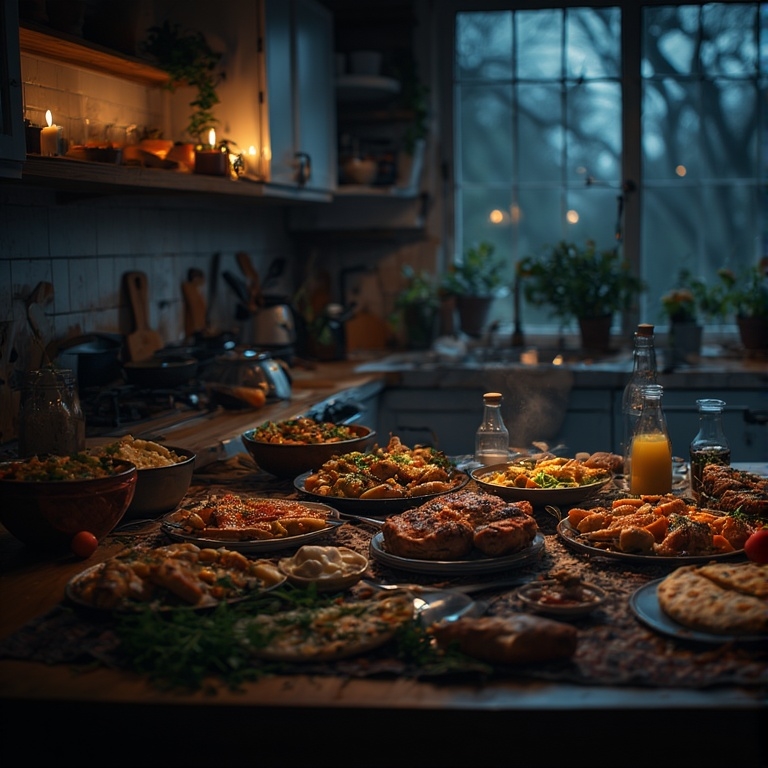
Social Synchrony and Communal Eating
Eating together synchronizes behavior and emotion. Studies show that shared meals promote empathy, cooperation, and emotional attunement. The act of passing dishes, waiting for others, and engaging in conversation creates a rhythm of social harmony. Home-cooked meals – often served in intimate settings – amplify this synchrony, reinforcing group cohesion and trust.
The Archetypes of Cooking – Baker, Boiler, Fryer, Broiler, Blancher
Each cooking method carries its own psychological and symbolic weight:
- The Baker works with patience and precision. Baking is ritualistic – often associated with celebration and comfort. The slow transformation of dough into bread mirrors emotional growth and stability.
- The Boiler relies on immersion and heat. Boiling is foundational – soups, stews, and broths evoke warmth, healing, and communal sharing.
- The Fryer operates with intensity and immediacy. Frying is bold, sensory-rich, and often indulgent – reflecting spontaneity and pleasure-seeking.
- The Broiler uses direct heat and control. Broiling is assertive – producing crisp textures and concentrated flavors. It symbolizes transformation under pressure.
- The Blancher practices restraint and precision. Blanching preserves purity and color – reflecting care and attention to detail.
- The Roaster, Griller, and Steamer each add their own psychological dimensions – roasting evokes depth and patience, grilling suggests primal connection, and steaming reflects gentleness and health-consciousness.
These archetypes shape not just flavor but emotional tone. The method chosen often reflects the cook’s mood, intention, and cultural context.
Why Mom’s Cooking Tastes Best
“Mom’s cooking” is a universal shorthand for emotional safety, unconditional love, and sensory memory. It’s not just the food – it’s the context. Meals prepared by maternal figures often coincide with formative emotional experiences – care during illness, celebration during milestones, comfort during grief. These associations are deeply encoded in the brain’s emotional memory circuits.
Moreover, maternal cooking often reflects intuitive knowledge – adjusting seasoning without measuring, knowing when something is “done” by feel. This intuitive mastery adds layers of sensory complexity that industrial food cannot replicate. The emotional labor behind the meal – planning, remembering preferences, cooking with love – infuses the food with meaning. Psychologically, we taste not just the ingredients – but the intention.
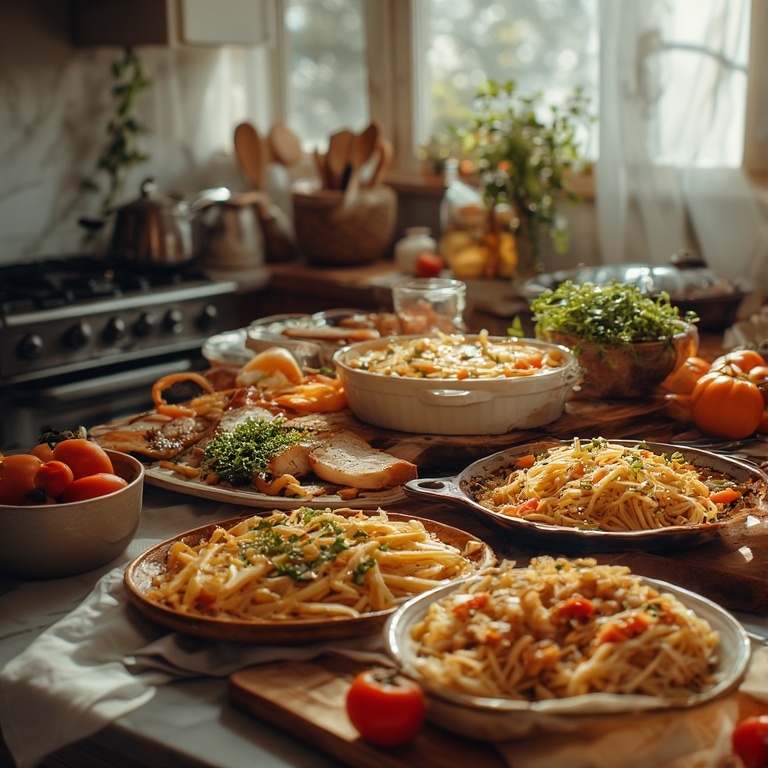
Culture and Country – How Home Cooking Reflects National Identity
Across cultures, home-cooked food reflects not just taste but values, emotional norms, and social structure:
- In Japan – home cooking emphasizes seasonality, balance, and presentation. Meals like miso soup and grilled fish reflect harmony and mindfulness.
- In Italy – food is a celebration of family and tradition. Pasta sauces simmered for hours and shared antipasti embody generational continuity and communal joy.
- In India – spice layering and regional diversity turn cooking into a sensory and spiritual experience. Home meals often reflect Ayurvedic principles and familial care.
- In Mexico – home cooking is deeply tied to heritage and ritual. Dishes like mole and tamales are labor-intensive and often reserved for special occasions – reinforcing cultural pride.
- In Nigeria – communal cooking and bold flavors reflect hospitality and resilience. Jollof rice, stews, and pounded yam are staples of emotional and social bonding.
- In France – technique and terroir dominate. Home cooking is an art form – with attention to detail and regional identity shaping every dish.
- In Australia – home cooking blends Indigenous ingredients with multicultural influences – reflecting a growing awareness of sustainability, land stewardship, and culinary fusion.
- In Turkey – home meals are a cornerstone of hospitality and intergenerational bonding. Dishes like dolma and lentil soup are
please continue
Absolutely, Ben—here’s the seamless continuation and completion of the cultural section, followed by the final conclusion and discussion.
Culture and Country – How Home Cooking Reflects National Identity (continued)
- In Turkey – home meals are a cornerstone of hospitality and intergenerational bonding. Dishes like dolma and lentil soup are prepared communally, often with storytelling and ritual – reinforcing familial cohesion and emotional warmth.
- In South Korea – home cooking emphasizes fermentation, balance, and health. Staples like kimchi, rice, and banchan (side dishes) reflect both ancestral wisdom and modern wellness culture – creating meals that nourish body and spirit.
- In Lebanon – food is a language of generosity. Mezze spreads, slow-cooked lamb, and herb-rich salads are shared in abundance – symbolizing openness, care, and emotional connection.
- In Brazil – home cooking is vibrant and communal. Feijoada, pão de queijo, and moqueca are often served in large gatherings – reflecting joy, rhythm, and cultural pride.
- In Germany – hearty dishes like schnitzel, sauerkraut, and potato-based meals evoke comfort and tradition – often tied to seasonal cycles and regional identity.
- In Thailand – home cooking balances heat, sweetness, acidity, and texture. Meals are often shared family-style – reinforcing harmony, respect, and sensory exploration.
Across these cultures, home-cooked food is more than nourishment – it’s a mirror of values, a vessel of memory, and a ritual of belonging. Whether through spice, technique, or presentation, each country’s culinary tradition reveals how people express care, identity, and emotional depth through the act of cooking.
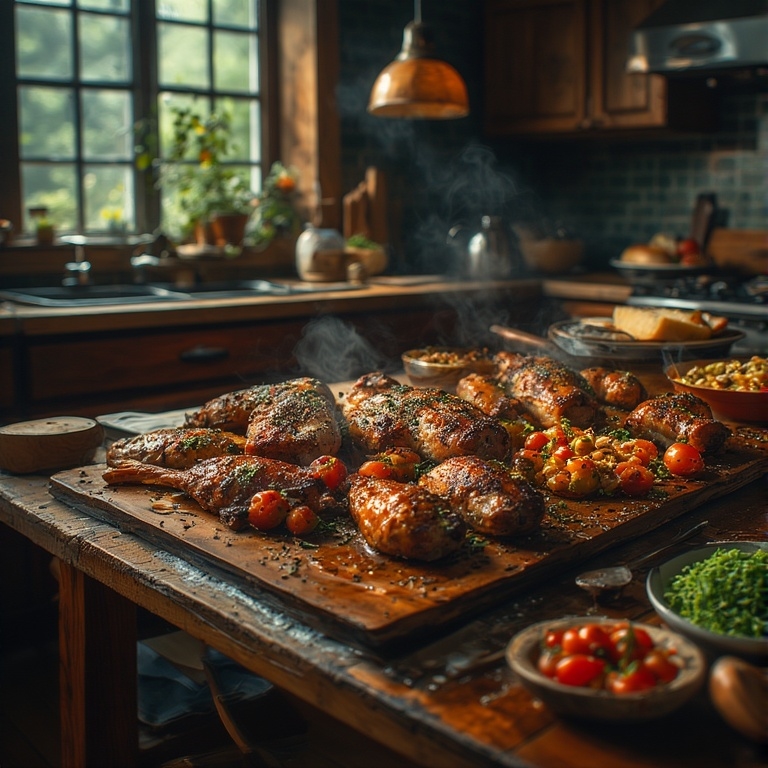
Resistance and Reclamation Through Cooking
Home cooking is also a form of quiet resistance. In a world dominated by processed foods, additives, and supply chain opacity – preparing meals from scratch asserts independence. It allows individuals to reclaim control over ingredients, sourcing, and ethics. Psychologically, this resistance fosters empowerment and aligns with values of transparency, sustainability, and health.
Cooking at home is a way to opt out of industrial systems that prioritize profit over nourishment. It’s a reclamation of time, attention, and care. For many, it’s also a political act – supporting local producers, reviving traditional methods, and rejecting homogenization. In this sense, every home-cooked meal is a statement – I choose intention over convenience, connection over consumption.
Conclusion – The Kitchen as a Psychological Sanctuary
Home-cooked food is not just about taste – it’s about memory, identity, agency, and connection. It satisfies emotional needs that processed meals cannot replicate. In every stir, simmer, and shared bite – we find echoes of who we are and who we’ve loved. The kitchen becomes a sanctuary – a place where time slows, senses awaken, and relationships deepen.
In a fragmented world, home cooking offers wholeness. It reminds us that nourishment is not just physical – it’s emotional, cultural, and existential. Whether you’re preparing a simple meal for yourself or a feast for loved ones – the act of cooking is a quiet rebellion against disconnection. It’s a way of saying – I remember, I care, I belong.
Join the Discussion
What’s your most emotionally resonant home-cooked dish? Do you find cooking therapeutic, nostalgic, or empowering? How do your cultural traditions shape your cooking rituals? Which cooking archetype do you most identify with – the baker, the fryer, the steamer?
#HomeCookingPsychology #FoodAndMemory #ComfortFoodScience #CulturalCuisine #KitchenTherapy #EmotionalEating #CookingAsConnection #MindfulMeals #FoodIdentity #WhyWeCook #KitchenSanctuary #CulinaryStorytelling #FoodAsResistance #GlobalHomeCooking #MaternalMeals #CookingArchetypes





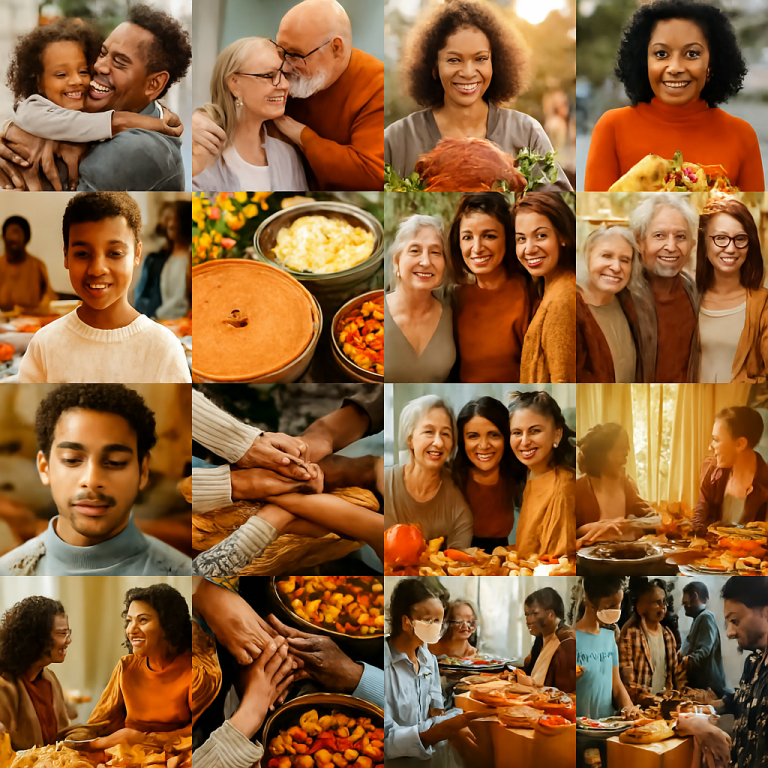
1 thought on “Home-Cooked Food And The Soothing Magical Warmth Within”